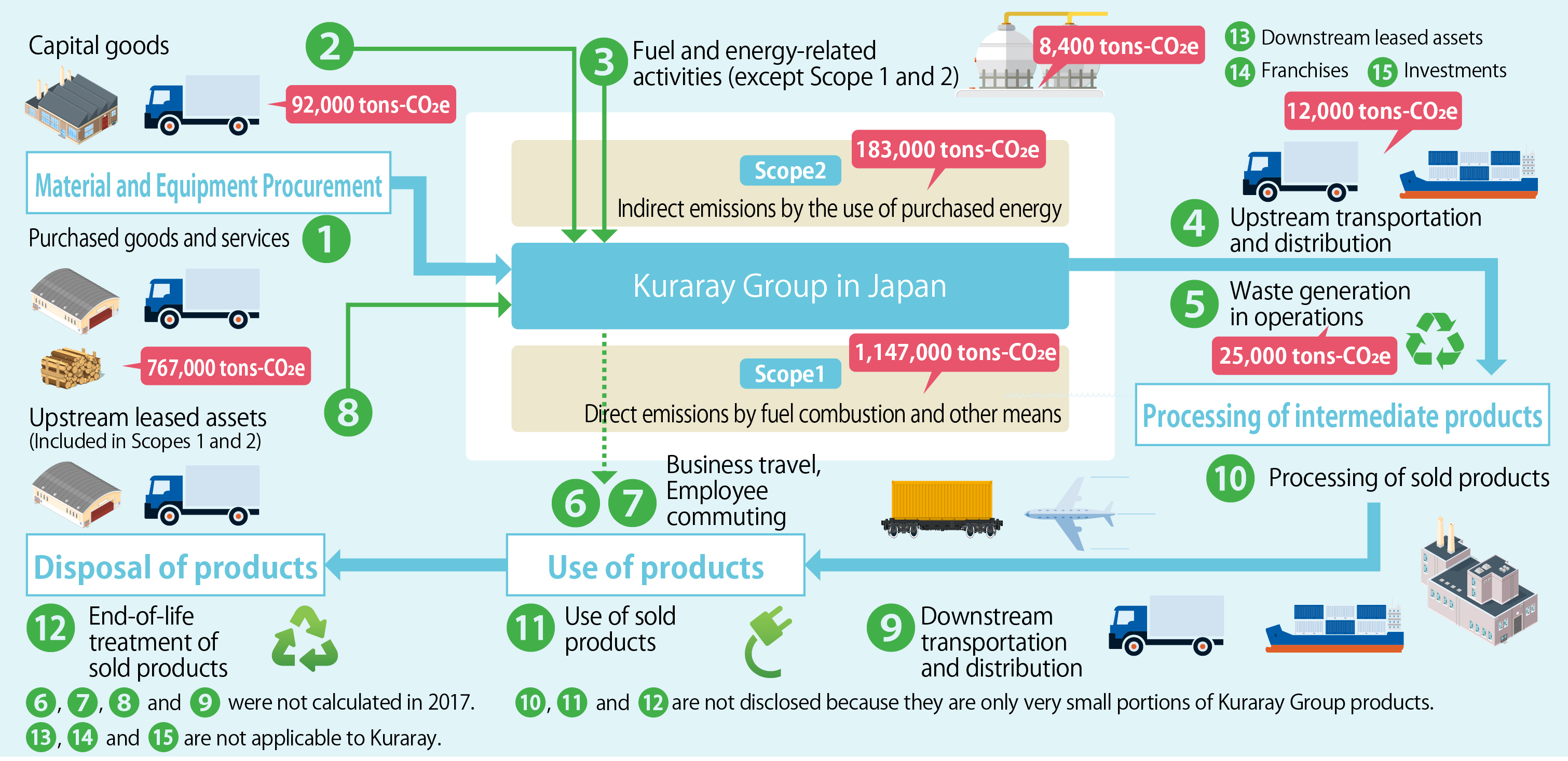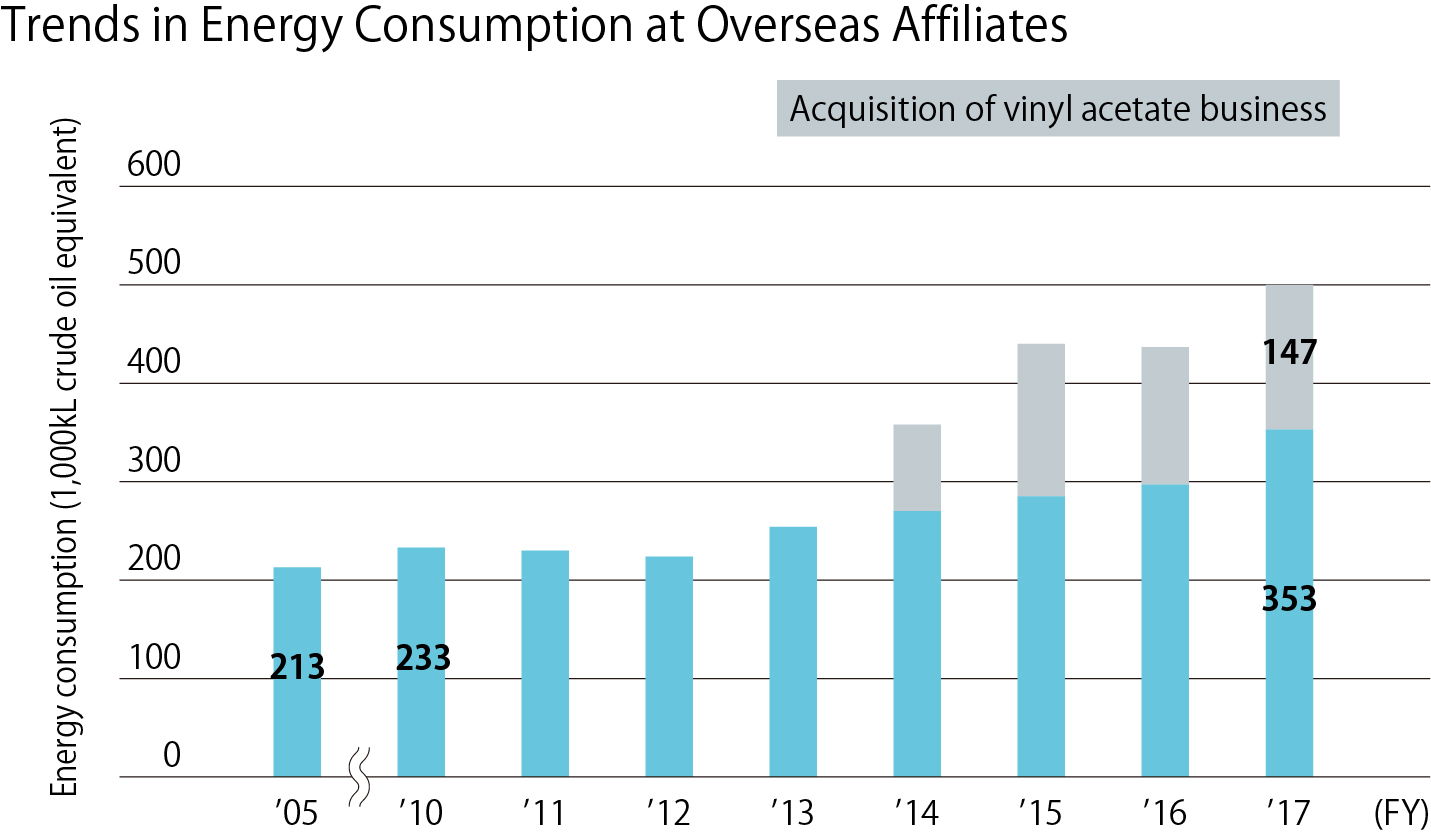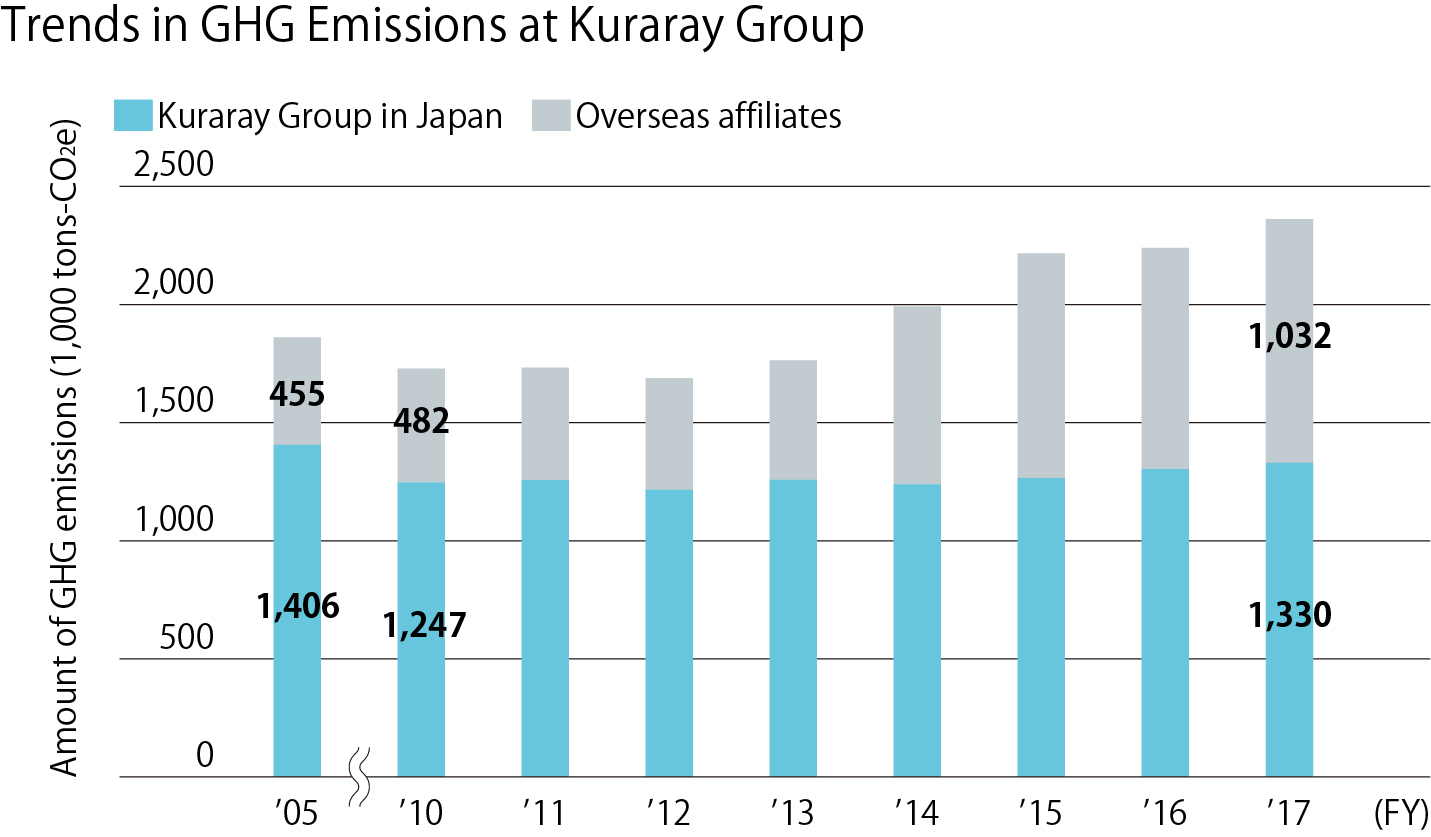Global Warming Prevention
The Kuraray Group in Japan has been conducting CO2 reduction activities such as increasing biomass fuel volume, using waste plastic as a fuel, ensuring a higher operating efficiency, installing energy-saving equipment and steadily performing energy-saving activities. In fiscal 2017, we implemented measures to reduce GHG emissions by 9,600 tons-CO2e (cumulative total reduction of 160,000 tons-CO2e since fiscal 2011) and total GHG emissions of the Kuraray Group in Japan were 1,330,000 tons-CO2e. As a result, environmental efficiency index of the Kuraray Group in Japan improved by 8.7% compared with fiscal 2010. However, this performance is behind the target of a 28% improvement as of fiscal 2017 envisioned in the Medium-term Plan.
On the other hand, the energy consumption of affiliates outside Japan was 500,000 kL (crude oil equivalent). This was due to the rise in capacity utilization of a new production site and the expansion of production capacity of existing equipment. Environmental efficiency has been decreasing since 2014, and in fiscal 2017 it was below by 9.1% compared with the benchmark year of 2010. This is because we acquired the vinyl acetate business which produces the raw material of Poval resin to change our business model from purchasing to self-manufacturing. For this reason, energy consumption increased. However the sales did not increase as much as the energy consumption did.
| Kuraray Group in Japan | Total: 1,330,000 tons-CO2e [FY2016 : 1,303,000 tons-CO2e] |
|---|---|
| Overseas affiliates | 500,000kL (crude oil equivalent) [FY2016 : 437,000kL (crude oil equivalent)] |
Power Generation by Biomass Fuel
At Kurashiki Plant of Kuraray in Japan, biomass fuel* (wood chippings from construction debris and other sources) has been used as a substitute fuel of coal and the consumption of biomass fuel has steadily been increasing. In fiscal 2017, about 43,000 tons of biomass fuel were consumed, contributing to a reduction of about 65,000 tons-CO2e in its emissions. The Kuraray Group will continue its activities to increase the ratio of biomass fuel consumption accounted for by the fuel in the boiler.
* Biomass absorbs CO2 in the atmosphere as it grows, and can be considered to emit no CO2 when the CO2 that is generated when biomass is burnt is subtracted from the CO2 that is absorbed during its growth.
Reducing Environmental Load during Product Transportation
Kuraray is also reducing its environmental load in the distribution stage of delivering its products to users, in addition to GHGs emitted by itself during the manufacture of products at its plants and other facilities. Kuraray is continuously active in the “modal shift” where the transportation means is changing from trucks to cargo trains, ships and other methods. As a result, its emissions of GHGs were reduced to 12,000 tons-CO2e.
Emissions of Scope 3 GHG
The GHG Protocol* classifies GHG emissions into three categories: Scopes 1, 2 and 3.
- Scope 1: Direct emissions
- GHG emissions generated by fuel combustion at the plants and other facilities of one’s own company
- Scope 2: Indirect emissions
- GHG emissions generated by the use of purchased energy such as electricity, heat, and steam supplied by other companies
- Scope 3: Other indirect emissions
- The other indirect emissions.GHG emissions along the entire supply chain (from raw materials to product disposal.)
Mandated under the law by which businesses voluntarily calculate and report Scope 1 and Scope 2 to the government, we have been reporting these to the government and publishing the results in our CSR Report and elsewhere.
On the other hand, Scope 3 means the GHG emissions based on the entire supply chain related to Kuraray. We can understand how the indirect GHG emissions are generated from the viewpoint of a life cycle such as raw material procurement, product distribution, product use and disposal as well as the direct emissions related to Kuraray’s business activities. Kuraray has continued making Scope 3 calculations since fiscal 2013.
Among the 15 categories in the total of Scope 3, we calculated actual values for fiscal 2017 for 5 categories [(1) to (5)] with a relatively large emission amount, excluding those not applicable to Kuraray and those having a limited calculation coverage in the products of Kuraray. We will also continue to quantitatively evaluate the CO2 reduction related to the carbon life cycle of the Kuraray Group products.
* GHG Protocol (Greenhouse Gas Protocol) is an initiative to develop international standards and related tools on greenhouse gases and climate change led by the World Resources Institute (WRI) and World Business Council for Sustainable Development (WBCSD) and participated in by corporations, NGOs, government institutions and other organizations throughout the world.
Conceptual Image of Control on Emissions of Greenhouse Gases in Entire Scope 3 Supply Chain ((1) to (15) show categories of Scope 3)



